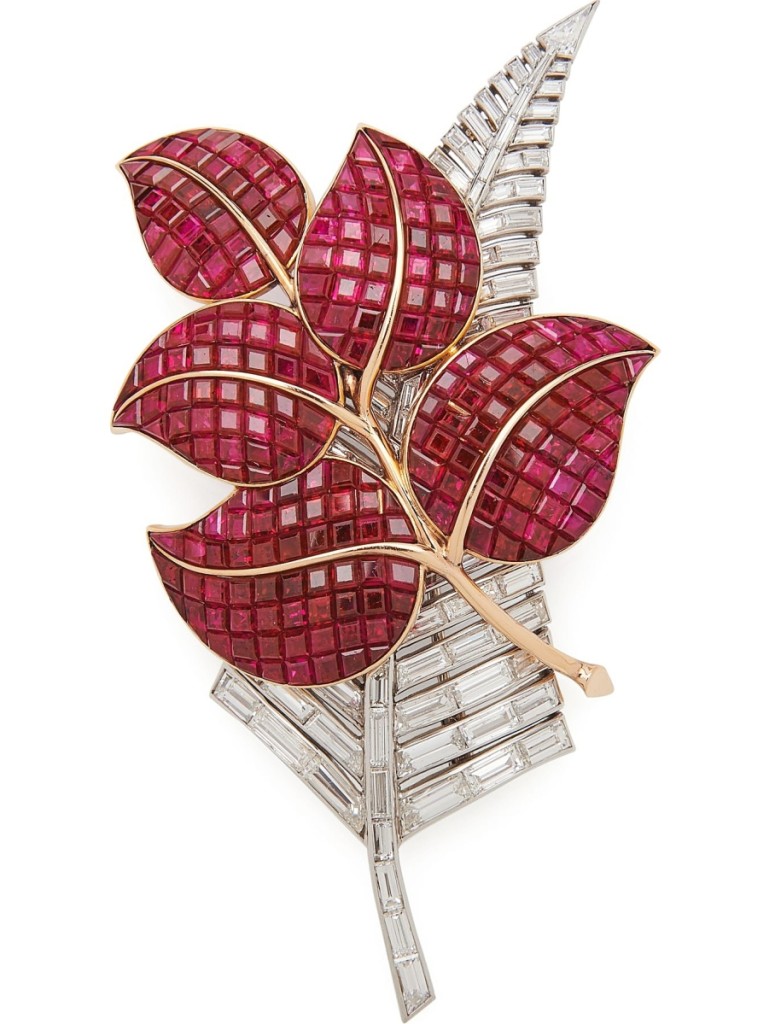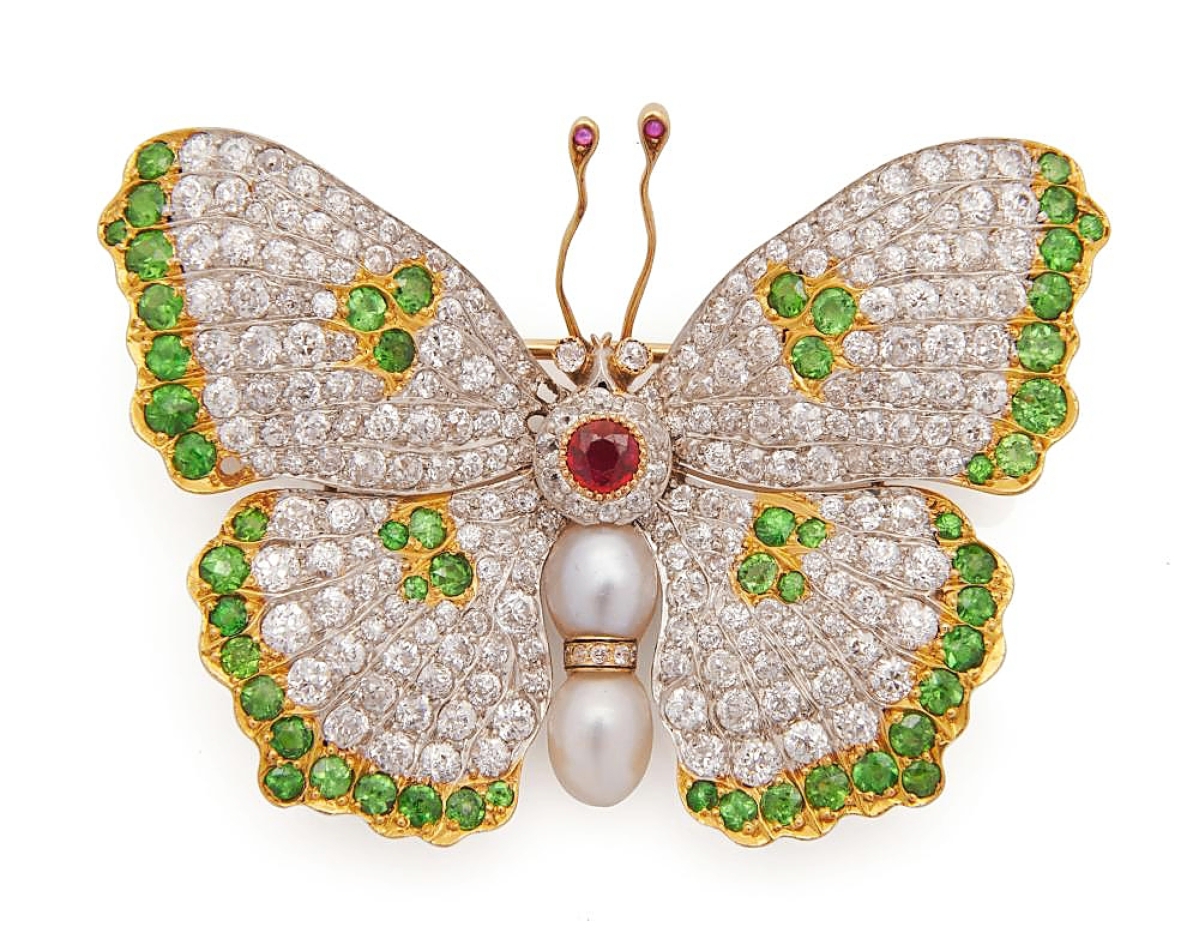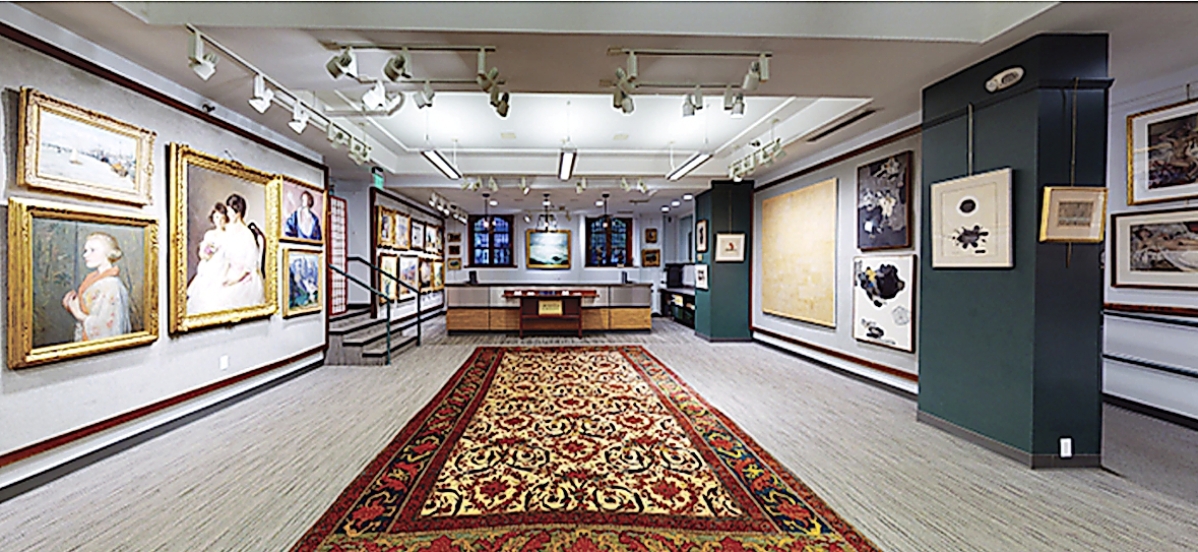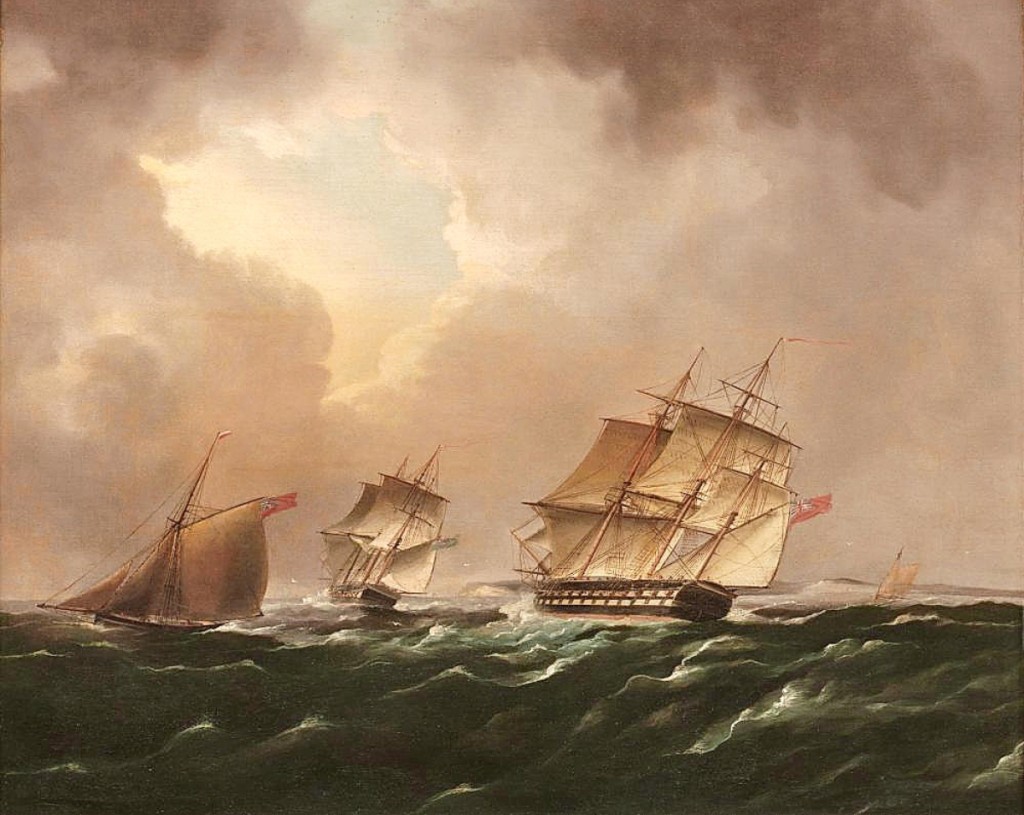
Bringing $781,250, unquestionably the star of the sale, was a fabulous circa 1935 “Mystery-Set” platinum, 18K gold, ruby and diamond leaf-form brooch. The “Mystery Set” technique, which hides signs of how it was constructed, was invented by Van Cleef & Arpels and, according to Taylor See, jewelry specialist, each piece required hundreds of hours of labor.
Review and Onsite Photos by Rick Russack, Additional Photos Courtesy Grogan’s
BOSTON – Grogan’s November 7 strong sale was slightly different in that it focused exclusively on fine art and jewelry; the 226 lots were about evenly divided between those two categories. The silver, furniture and decorative objects that in the past have been part of the regular sales will be sold in December’s “Holiday Auction.”
Michael Grogan, when asked about this, said, “We have a lot of great stuff, but we didn’t want to try to put 500 or 600 lots into one auction. It would make the sale too long, so we decided to split the sale in two. The ‘Holiday Auction’ has more fine quality jewelry and art, and there will be silver, furniture and decorative objects.”
Grogan also commented, “I’ve said before that our goal is to push our average lot price higher and as people see that, it results in more high-quality items, in all categories, being offered to us. That’s the direction we want to go in. We’re not looking to sell quantity; we want to focus on quality. It allows us to spend more time describing items accurately and being sure of our condition statements. I think it works for us.”
It’s interesting to note that at a time when many auction companies are eliminating the comprehensive illustrated catalogs of the past, Grogan continues to produce and distribute catalogs with color photos and descriptions, with more comprehensive descriptions and condition statements online. More than 13,000 copies of the 160-page catalog were mailed out in advance of the sale. In addition, each of the department heads sent out emails a couple of weeks before the sale, highlighting about a half dozen of their favorite items. The sale grossed $3.7 million and about half the items finished above estimates. In addition to the “Mystery-Set” brooch, another piece of jewelry and a painting brought more than $100,000 each, and more than 80 items, more than one-third of the sale, brought five-figure prices.

It was a good day for brooches. This one had a lot going for it — 18K gold and platinum, with diamond, garnet, pearls and rubies in the form of a butterfly, and it reached $31,250. It dated to the Nineteenth Century.
The star of the sale was a fabulous circa 1935 Van Cleef & Arpels “Mystery-Set” platinum, 18K gold, ruby and diamond leaf-form brooch, which sold for $781,250. The “Mystery Set” technique, which hides signs of how it was constructed, was invented by Van Cleef & Arpels and, according to Taylor See, Grogan’s jewelry specialist, each piece required hundreds of hours of labor. The Van Cleef & Arpels website describes the technique: “The Mystery Set is a true feat in the world of jewelry-making and an iconic example of Van Cleef & Arpels’ unparalleled expertise. This technique, patented in 1933, makes it possible to set precious stones – rubies, sapphires, emeralds and diamonds – with no prong or other metal component visible. The technique is so complex that it can require up to eight hours of work to achieve the perfect cut.”
See’s entry in Grogan’s catalog adds, “The design demands perfectly matched stones, hand-cut with additional facets, to obscure the metal settings. The secret behind the invisible setting is the net framework on the underside of each piece.” The final price far exceeded even the most optimistic expectations. Lucy Grogan Edwards, vice president and jewelry director, commented, “There’s almost no way to predict what pieces of this quality are likely to bring at auction. They’re so rare, and the sophisticated buyers who are interested in them know that.”
Another brooch, this one by René Boivin, sold for $125,000. In the form of a tree, the 18K gold, amethyst and pink tourmaline “Cedar Tree” brooch was set with circle-cut amethyst and pink tourmaline, kite-cut amethyst, oval-cut amethyst and cabochon pink tourmaline, enhanced by circle-cut garnets. This brooch is illustrated in René Boivin Jeweller and was designed by his daughter, Germaine, as a gift for her mother’s 80th birthday.
Numerous other pieces of quality jewelry performed well, including a dozen pieces by Cartier. A pair of platinum Burmese ruby and diamond ear clips, each with a 1.5-carat pear-cut ruby, sold for $78,125. A pair of Cartier circa 1930 paisley-form platinum and diamond dress clips finished at $75,000. These had descended in the Wanamaker family. With the same provenance and topping the watch sales was a circa 1930 signed Cartier platinum and diamond lady’s wristwatch with a manual-wind movement, set with baguette and bullet-shaped diamonds and a bracelet set with single-cut diamonds. It earned $46,250. There were four other pieces by Van Cleef & Arpels, along with several by Tiffany, Boucheron, Buccellati, David Webb; and watches by Rolex, Piaget and Patek Philippe.

The Charles Street gallery was set up for previewing. Gottlieb’s untitled, which sold for $93,750, hangs on the right.
After the sale, discussing its success, Lucy Grogan Edwards shared her thinking, “I think our success in this sale was a reflection of our selectivity when discussing consignments with owners. I know that I’ve gone on house calls where I’ve been shown 30-40 nice pieces of jewelry, but I thought that only 3-4 would be right for us. Many of the pieces in this sale belonged to families with recognizable names, such as the pieces we had this time from the Wanamaker family. Everyone knows that name and realizes that those folks were buying the very best examples. Provenance matters.”
A discussion of the jewelry could easily continue, but one might lose sight of the fact that the sale brought the same strong results with the fine art offerings ranging in date from the Thirteenth Century to the Twenty-First Century. And, again, there were some surprises. Georgina Winthrop, fine art director, had said before the sale that “Lips & Paper,” a 1993, ink, oil and collaged paper on canvas by Ellen Gallagher (b 1965) was among her favorite paintings in the sale. Bidders agreed and it sold for $156,250. In 1994, the painting had been exhibited at the Institute of Contemporary Art, Boston, and had been bought directly from the artist in the early 1990s. It hung in that collector’s home ever since. Untitled, an acrylic on paper by abstract expressionist Adolf Gottlieb (1903-1974), signed and dated 1965, earned $93,750. It had been purchased in 1966 by a private collector and remained in her family until now. This work is listed as no. 6575 in the Adolph and Esther Gottlieb Foundation Archives.
“Fleurs” by Vietnamese artist Le Pho (1907-2001) was one of the surprises, finishing at $78,125, more than twice the estimate. This painting had also descended in the family of the original purchaser. There were two works in the sale by British artist Graham Sutherland (1903-1980). An untitled gouache, watercolor and crayon on heavy card, signed and dated 1957, earned $46,875. This painting had also been in the consignor’s family since 1967, as had the second one.
It’s interesting to observe that the four paintings bringing the highest prices had all come from consignors who had either purchased them directly from the artist or who had owned them for decades. This directly relates to a statement made after the sale by Lucy Grogan Edwards. Although she was talking about the firm’s success with jewelry in this sale, it obviously carried over to the fine arts selection. She said, “The pieces that do well tend to be the pieces that have been in family collections for generations since they were purchased from the (artist or) makers like Tiffany and Van Cleef, 50 or 75 years ago. In those days, (referring to jewelry) output was smaller. Together with the fact that these pieces are new to the market, it drives an increase in the level of buyer interest.”

There were several paintings by well-known marine artists. An oil on canvas, “English Man-of-War Forming Up in the Straits of Dover,” by English artist Thomas Buttersworth went out for $11,875.
There were two paintings by Emile Gruppe (1895-1978). One, an oil signed by the artist and titled “Gloucester Sky” on the reverse sold for $22,500. There were nine paintings by John Worf, (1903-1959). Two sold for $13,750 each. One of these was “Mystic Avenue Bridge” and the other was “Grandfather’s House.” There were three works by Andy Warhol (1928-1987). A limited edition 1980 screenprint of Gertrude Stein realized $20,000. It was number 58 of an edition of 200 and signed by Warhol. This list could also go on and on with works by Frederic Remington, Wolf Kahn, William Aiken Walker, Grandma Moses and many others.
After the sale, Georgina Winthrop said she believed that interest was strong for a variety of styles, both for traditional and non-traditional works. “People were buying things they really liked. We were pleasantly surprised by the level of interest in works like the collages by Ekua Holmes. There’s an exhibit now at Boston’s Museum of Fine Arts of her award-winning children’s’ book illustrations, so more people are aware of her now.”
A few days after the sale, Michael Grogan said, “Obviously, we’re delighted with the results of this sale. The market is certainly strong for the highest quality items, and we succeeded in reaching the retail buyer. More than half the invoices we sent out were for single pieces – people were buying things that they loved. Some items came from collectors who have been long-time clients of ours, and many more came from the house-calls that Lucy, Georgina and Taylor go out on.”
Prices given include the buyer’s premium as stated by the auction house. For information, www.groganco.com or 617-720-2020.



































